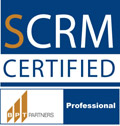Enterprise 2.0 is not field of dreams – CSC
by Emanuele Quintarelli · 15 June 2010
- If you build it, they will come? No
- How CSC built the field of dreams
- CSC 92K employees, 90 countries. Started with portals, wiki and finally C3
- Business problem: locating experts and assets, onboarding new hires, avoiding silos and barriers to innovation, avoid loosing intellectual properties, supporting thought leadership
- Not the Facebook for the Enterprise but connecting people to people, people to content and people to community
- They put together: business requirements, goals, sponsorship (IT, Security, Legal, etc), shortlist of products.
- They launched a pilot of adoption patterns and tools not limited in the number of people involved but on duration. The pilot has been so successful to become the end stage of the project
- C3 got internal and external recognition. Connect to connect time zones and overcome distance, communicate to share work and thoughts, collaborate to get the work done
- C3 got viral and Global during the pilot. Success was reached because CSC focused on people, use cases, adoption strategy. They plan for global scale from beginning
- C3 provides business value: collapsing time and distance barriers to leverage global expertise, reducing cycle time for proposal development to increase revenue, reduce customer acquisition costs, easier to locate and engage internal experts, improve employee onboarding, collaborating more to drive process efficiencies
- C3 Wins hearts and minds: people are proud to be in CSC, people converted to the new environment, adopted to reach business objectives, to leverage the power of the wider organization
- Plan for Success: Plan for the people and the business. You can’t go viral if you don’t plan viral. Adoption best practices: don’t overlook executives and find those who want to walk the talk. Taxonomy shouldn’t reflect organization chart but thought to allow patterns to emerge. Don’t ignore politics and culture but listen, learn and adapt. Give guidance about how to use new tools. Start with a small team but have a way to make it scale stuffing properly with community managers and locating advocates. Prepare use cases. 1 community manager, 12 champions and more than 100 advocates before launching and involved into strategy
- Adoption Planning model (look at the table)
- Some tactics. With advocates got access to a sandbox environment before everyone else knew. Identified meaningful use cases early in the pilot to demonstrate the business the value of collaboration
- Executives can be advocates as well. Executives were prepared to be actively involved. This is critical and to make it happen you have to prove them that they can extract some relevant personal value. Invited them to start their blog in their own voice, to promote c3 in team meetings or with email communication, asked resources to engaging their organization
- Seed use cases. Starting empty doesn’t make sense. Over 100 opinionated, active, passioned advocates to start conversations to make people feel welcomed at their first visit
- Watercooler. People work better together when they know each other on a personal level so trust people and encourage social conversation
- Feedback and transparency. Solicited feedback and passed back to the team to provide answers. There were discussions that simple had to left dying but keeping honest and transparent to build trust and credibility
- Roadmap: june 08 business case, may 2008 pilot, august 20K users, feb 10 SS0/Video, May 10 45 users, June 10 SBS V4. Proving to users that the project is constantly going on and bringing the sample principle external
- For advocates: career, exposure to the organization
- If you plan well the will come. Be credible to the company, leadership. Engage sponsors. Move quickly and showing value. Plan for Adoption


